[Edited given further clarification by OP]
OK, I have better understanding of your question now. You want to give your camera lens perspective on the objects in your world.
If your camera looks only in the X directions in relation to your world objects, you can simply use parallax. You do this by applying 2 layers to your canvas that are scrolling at different speeds in X directions. This is panorama parallax. So for every frame, draw 2 layers like this pseudo-code:
// Move the back layer
backLayerX += 3;
ctx.save();
ctx.translate(backLayerX,backLayerY);
// draw the objects in your back layer now
ctx.translate(-backLayerX,-backLayerY);
ctx.restore();
// Move the front layer faster than the back layer
frontLayerX += 10;
ctx.save();
ctx.translate(frontLayerX,frontLayerY);
// draw the objects in your front layer now
ctx.translate(frontLayerX,frontLayerY);
ctx.restore();
And if you move the camera itself in an X direction, you must also alter the speed at which the front and back layers are translated.
If your camera also looks in the Z directions (camera closer) in relation to your world objects, the process is much more complicated.
For example, if you move closer to a statue, the statue appears to get bigger—ctx.scale(2,2). The background scenery also gets bigger, but not as fast—ctx.scale(1.25,1.25).
Then if you also take a step to the left, then the left side of the statue is slightly larger than the right side of the statue—the context skews. The background skews also, but very, very slightly.
Then if you also stand on a chair (change the Y direction) you get a different kind of skewing.
Your camera can never move even with the statue because your statue is 2D—just a cardboard cutout of the statue. From the camera’s perspective, the statue will actually disappear!
I hope I’ve given you a start to your project, but a full answer is waaaaaaaaaay beyond a Stackoverflow answer—it’s a college course on computer graphics.
I do have an online tutorial recommendation for you. There is an excellent lecture on Perspective by Wolfgang Hurst. This is lecture#7 in his 13 part online college course. You can view his lecture two ways. View broadly to get the concepts involved in giving your camera perspective. Or view deeply and get the mathematical algorithms: http://www.youtube.com/watch?v=q_HA-x5AujI&list=PLDFA8FCF0017504DE
Good Luck and Learning… :)
[What follows addresses the OP's original question]
Here’s a quick tutorial on how to successfully rotate anything in canvas
The whole world rotates around an X/Y “registration point”.
You set the registration point by doing ctx.translate(X,Y) just before the ctx.rotate(angle).
After you draw your “world” objects in this rotated space, you must re-set the registration point by doing translate(-X,-Y).
So world rotation goes like this:
- Context.save();
- Context.translate( registrationX, registrationY );
- Context.rotate(angle);
- Draw stuff.
- Context.translate( -registrationX, -registrationY );
- Context.restore();
Here’s an excellent way of understanding rotation and registration points:
- Get a piece of paper and draw a single letter on the page.
- Get a pencil and hold it down at any point on the page.
- --The pencil point is the registration point.
- --The pencil point is the translate(X,Y).
- Rotate the paper around the pencil point.
- --The rotation of the paper is rotate(angle)
- --Notice how the letter rotates as the paper moves.
- --Your red box will rotate just like the letter (around your camera registration point)
- Reset the paper to straight-up rotation.
- --This “un-rotation” is like the translate(-X, -Y)
- Move the pencil to another point on the paper
- --Again, this is like translate(newX,newY)
- Rotate the paper again and notice how the letter rotates in a different pattern.
Here is code and a Fiddle: http://jsfiddle.net/m1erickson/nj29x/
<!doctype html>
<html>
<head>
<link rel="stylesheet" type="text/css" media="all" href="css/reset.css" /> <!-- reset css -->
<script type="text/javascript" src="http://code.jquery.com/jquery.min.js"></script>
<style>
body{ background-color: ivory; padding:30px; }
canvas{border:1px solid red;}
</style>
<script>
$(function(){
var canvas=document.getElementById("canvas");
var ctx=canvas.getContext("2d");
var camX=100;
var camY=100;
var camRadius=40;
var camDegrees=0;
draw();
function draw(){
ctx.clearRect(0,0,canvas.width,canvas.height);
drawWorldRect(75,75,30,20,0,"blue","A");
drawWorldRect(100,100,30,20,15,"red","B");
drawCamera();
}
function drawWorldRect(x,y,width,height,angleDegrees,fillstyle,letter){
var cx=x+width/2;
var cy=y+height/2;
ctx.save();
ctx.translate(cx, cy);
ctx.rotate( (Math.PI / 180) * angleDegrees);
ctx.fillStyle = fillstyle;
ctx.fillRect(-width/2, -height/2, width, height);
ctx.fillStyle="white";
ctx.font = '18px Verdana';
ctx.fillText(letter, -6, 7);
ctx.restore();
}
function drawCamera(){
ctx.save();
ctx.lineWidth = 3;
ctx.beginPath();
// draw camera cross-hairs
ctx.strokeStyle = "#dddddd";
ctx.moveTo(camX,camY-camRadius);
ctx.lineTo(camX,camY+camRadius);
ctx.moveTo(camX-camRadius,camY);
ctx.lineTo(camX+camRadius,camY);
ctx.arc(camX, camY, camRadius, 0 , 2 * Math.PI, false);
ctx.stroke();
// draw camera site
ctx.fillStyle = "#222222";
ctx.beginPath();
ctx.arc(camX, camY-camRadius, 3, 0 , 2 * Math.PI, false);
ctx.fill()
ctx.restore();
}
function rotate(){
ctx.save();
ctx.translate(camX,camY);
ctx.rotate(Math.PI/180*camDegrees);
ctx.translate(-camX,-camY);
draw();
ctx.restore();
}
$("#rotateCW").click(function(){ camDegrees+=30; rotate(); });
$("#rotateCCW").click(function(){ camDegrees-=30; rotate(); });
$("#camUp").click(function(){ camY-=20; draw(); });
$("#camDown").click(function(){ camY+=20; draw(); });
$("#camLeft").click(function(){ camX-=20; draw(); });
$("#camRight").click(function(){ camX+=20; draw(); });
}); // end $(function(){});
</script>
</head>
<body>
<canvas id="canvas" width=400 height=300></canvas><br/>
<button id="camLeft">Camera Left</button>
<button id="camRight">Camera Right</button>
<button id="camUp">Camera Up.</button>
<button id="camDown">Camera Down</button><br/>
<button id="rotateCW">Rotate Clockwise</button>
<button id="rotateCCW">Rotate CounterClockwise</button>
</body>
</html>

